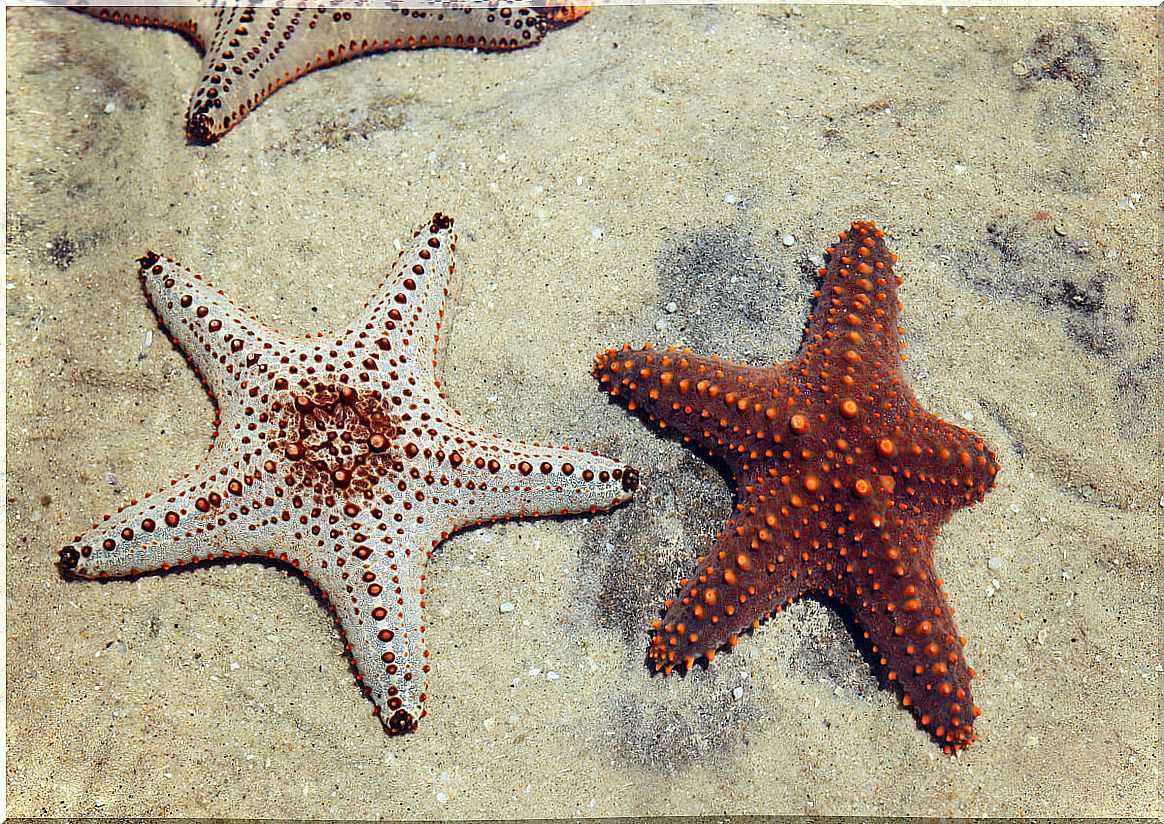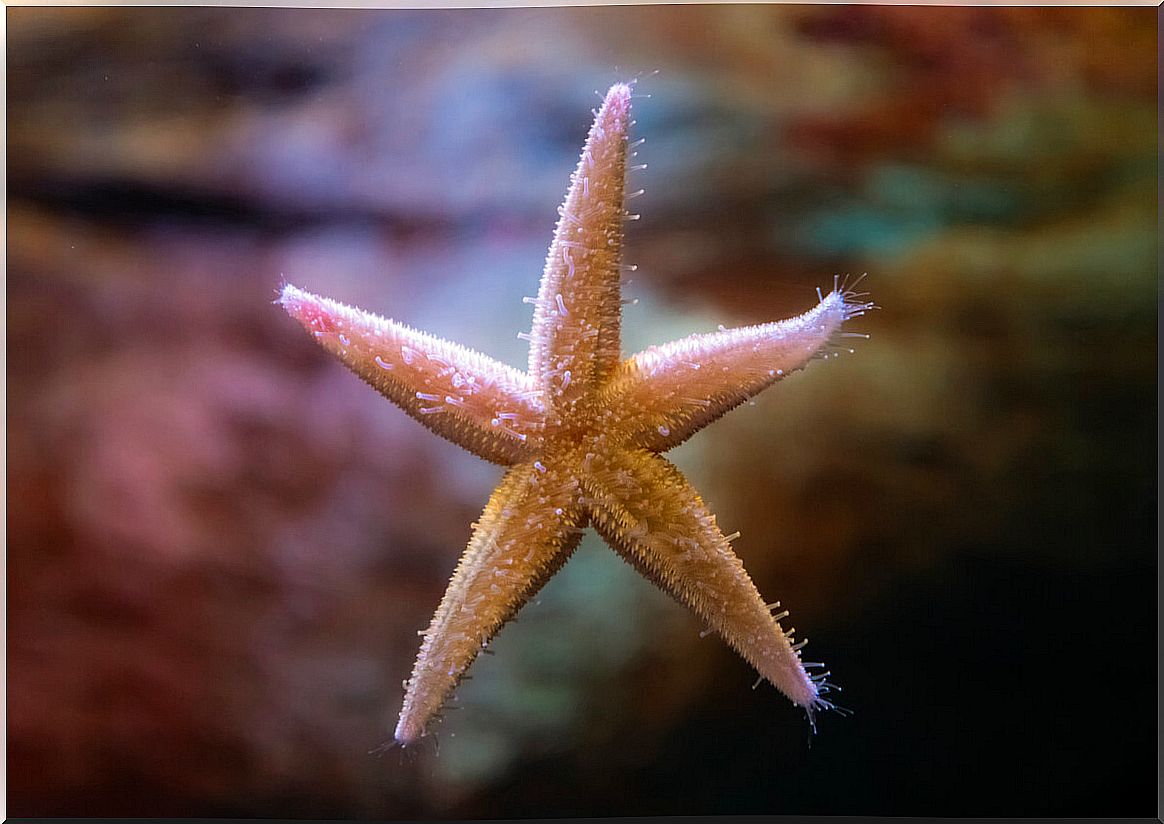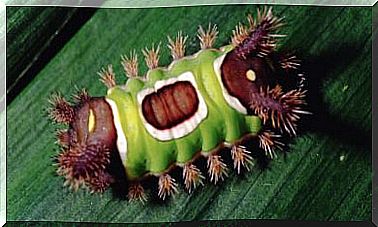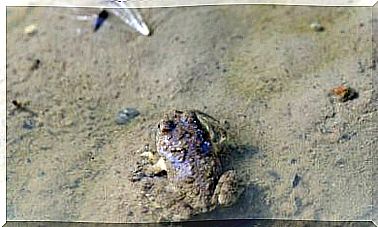Regeneration In Starfish: The Secret Of Life?

Starfish are famous for their regenerative powers. For example, if you lose one of your limbs, you can replace it with a new one. Even a new animal can grow from an arm and a body fragment. Humans, compared to starfish, have fairly limited powers of regeneration.
In people, wound repair occurs easily in some tissues, such as the liver. However, other cells such as heart muscle cells and neurons in the human body cannot regenerate after damage. For this reason, starfish can be useful models to study wound healing and regeneration in humans.
Understanding the biology of starfish
Starfish belong to the phylum Echinodermata and are related to sea urchins, lilies, and sea cucumbers. They are part of the Asteroidea class and until today, there are more than 1600 species of starfish.

Variety of sizes and colors
It is surprising to know that the size of starfish can vary from less than two centimeters to more than one meter in diameter. However, the most common species measure 12 to 24 centimeters. They have radial symmetry, this means that the arms, whether short or long, extend from a central disk. It is interesting to know that although most sea stars have 5 arms, some species can have up to 40.
Starfish have eyes
It is very interesting to know that these fascinating creatures have eyes. Still, these eye devices aren’t in the place you’d expect. In addition, they are not even similar to a human eye, as they consist of eye spots at the end of each arm.
Thus, five-armed starfish have five eyes and species that have 40 arms have 40 eyes. Of course, these creatures don’t see much detail, but they distinguish light and dark, which is enough to navigate their habitat.
They have protective armor
Depending on the species, a starfish’s skin can feel leathery or slightly prickly. The presence of a resistant cover that is formed by plates of calcium carbonate is typical . In addition, on this cover it has small thorns that serve to protect itself from predators.
They have no blood
Instead of blood, starfish have a circulatory system made up primarily of seawater. Seawater is pumped into the animal’s vascular system through its sieve plate.
This fluid circulates towards the star’s tubular feet, causing the arm to extend. Contrary to popular belief, the arms are not stiff. In fact, they help support prey, such as clams or mussels.
Amputation and regeneration
The regeneration process that occurs in starfish is very complex and only partially understood. Basically, regeneration is the ability of an animal’s cells to produce new parts of the body during adulthood, just as they did during embryonic development.
If a star has an amputated arm, a repair phase is initiated to heal the exposed wound. Once the wound heals, the animal begins to generate new cells, which in turn, cause new growth.
It is necessary to note that regeneration can take from several months to years. Cell proliferation that results in the growth of the new limb occurs in the final phase. If the final phase is interrupted, the resulting new limb can become deformed.
These creatures can also drop an arm to escape from a predator.
It is very interesting to know that, in addition to the fragmentation that starfish perform for the purpose of reproduction, they also do so as an escape response. This means that the animal can cut its body to escape the attack of a predator.
For this reason, in order to lose parts of the body, the animal performs a rapid softening of the connective tissue in response to nerve signals. Also, this type of tissue is called capture connective tissue and is found in most echinoderms.
In fact, science has identified an autotomy-promoting factor that, when injected into another intact starfish, causes rapid arm shedding.

The secret of life
Echinoderms are found in almost all marine habitats and make up a significant proportion of biomass. Thus, starfish and other echinoderms are extremely important to the biodiversity of our oceans.
Still, the regeneration of these invertebrates remains a secret to science. Will these mechanisms be the key to increased efficacy in human medicine? only time has the answer.









